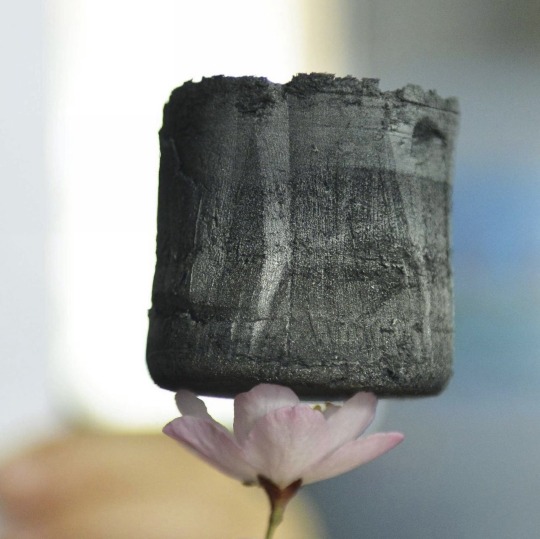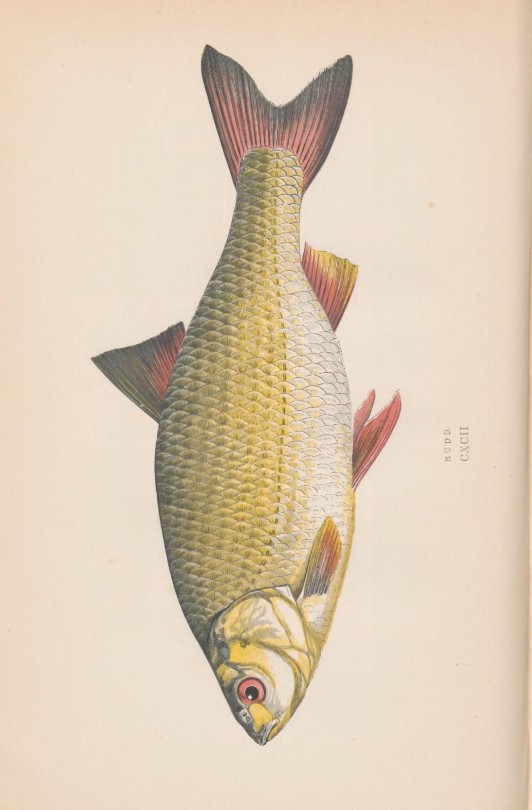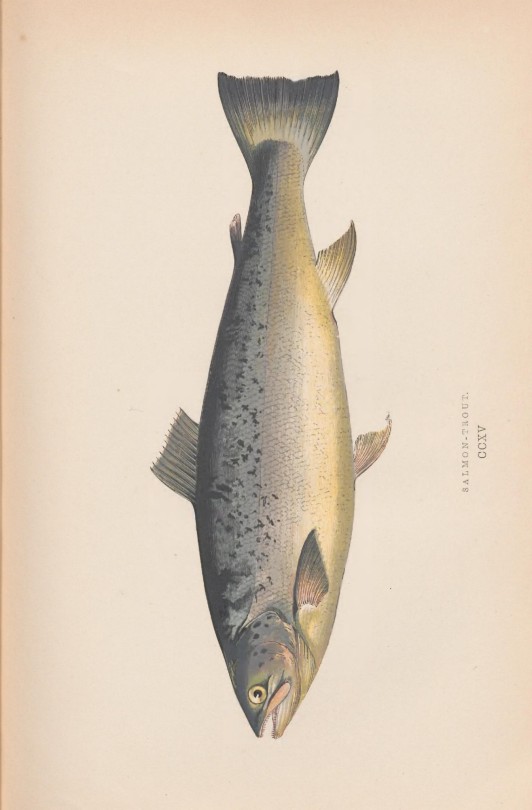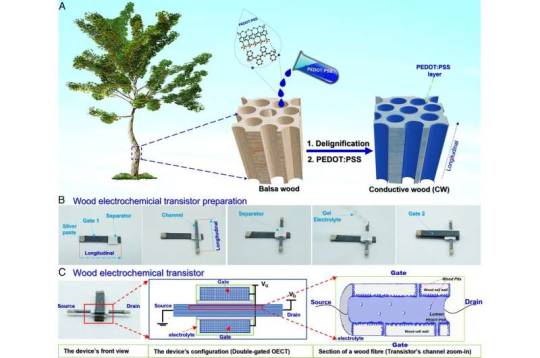#materials sciences
Text
Acting as the main interface between the internal and the external world, the skin is the largest and most important organ of the human body. It is frequently exposed to many types of physical injuries or wounds, including cuts, scrapes, scratches, infections, and ulcers.
Unfortunately, as one ages, the skin becomes more frail and less capable of healing itself without help. With many countries experiencing a rapid rise in the aging population, the demand for treating such skin wounds has created a greater need for accessible and effective wound care products.
Continue Reading.
208 notes
·
View notes
Text
So we have pure iron, and we add carbon and we call it steel. Ok cool, so then we also have cast iron, which is where you take iron and add more carbon. Yeah okay. And then we get pig iron, which is where you take iron and add even more carbon to it. So with steels we get high carbon steel and low carbon steel. Low carbon steel has more carbon than iron but less than iron. High carbon steel has less carbon than iron but much more than iron.
8K notes
·
View notes
Text

Graphene Aerogel is so light that a cubic inch of the material can be balanced on a blade of grass, the stamen of a flower, or the fluffy seed head of a dandelion.
2K notes
·
View notes
Text
Just some things I think deserve a super accurate movie/show adaption in a beautiful 2D animation style:
The How to Train Your Dragon series
Gregor the Overlander
Artemis Fowl
The Adventure Zone
The Hitchhiker's Guide to the Galaxy
Frankenstein or the Modern Prometheus
The Wonderful Wizard of Oz (fr so much was left out of the 1939 film!)
Alice's Adventures in Wonderland and Through the Looking-Glass
The actual Little Mermaid story (there are a ton of adaptations I haven't seen yet so maybe it exists somewhere but we all know Disney’s didn’t even come close)
#the entire series for those that have one if that wasn't clear#some of these need to be done#some just need to be done RIGHT#like fr why is it so hard for adaptations to just be faithful to the source material? It's not rocket science#also why did hunger games get so much love but no one read Gregor the Overlander?#the original little mermaid may be sad as heck but it is also beautiful#I admittedly only read the first few books in some of these series' but still#like did you know there's 14 oz books?#okay imma tag everything now#how to train your dragon#httyd books#gregor the overlander#the underland chronicles#artemis fowl#the adventure zone#taz#the hitchhiker's guide to the galaxy#hgttg#frankenstein#frankenstein the modern prometheus#the wizard of oz#alice's adventures in wonderland#the little mermaid#old niche fandoms#adaptation#animation#hans christian andersen#lewis carroll#suzanne collins#cressida cowell
563 notes
·
View notes
Photo

'Forever chemicals' destroyed by simple new method
PFAS, a group of manufactured chemicals commonly used since the 1940s, are called "forever chemicals" for a reason. Bacteria can't eat them; fire can't incinerate them; and water can't dilute them. And, if these toxic chemicals are buried, they leach into surrounding soil, becoming a persistent problem for generations to come.
Now, Northwestern University chemists have done the seemingly impossible. Using low temperatures and inexpensive, common reagents, the research team developed a process that causes two major classes of PFAS compounds to fall apart, leaving behind only benign end products.
The simple technique potentially could be a powerful solution for finally disposing of these harmful chemicals, which are linked to many dangerous health effects in humans, livestock and the environment.
"PFAS has become a major societal problem," said Northwestern's William Dichtel, who led the study. "Even just a tiny, tiny amount of PFAS causes negative health effects, and it does not break down. We can't just wait out this problem. We wanted to use chemistry to address this problem and create a solution that the world can use. It's exciting because of how simple—yet unrecognized—our solution is."
Read more.
3K notes
·
View notes
Text
The real AI fight

Tonight (November 27), I'm appearing at the Toronto Metro Reference Library with Facebook whistleblower Frances Haugen.
On November 29, I'm at NYC's Strand Books with my novel The Lost Cause, a solarpunk tale of hope and danger that Rebecca Solnit called "completely delightful."

Last week's spectacular OpenAI soap-opera hijacked the attention of millions of normal, productive people and nonsensually crammed them full of the fine details of the debate between "Effective Altruism" (doomers) and "Effective Accelerationism" (AKA e/acc), a genuinely absurd debate that was allegedly at the center of the drama.
Very broadly speaking: the Effective Altruists are doomers, who believe that Large Language Models (AKA "spicy autocomplete") will someday become so advanced that it could wake up and annihilate or enslave the human race. To prevent this, we need to employ "AI Safety" – measures that will turn superintelligence into a servant or a partner, nor an adversary.
Contrast this with the Effective Accelerationists, who also believe that LLMs will someday become superintelligences with the potential to annihilate or enslave humanity – but they nevertheless advocate for faster AI development, with fewer "safety" measures, in order to produce an "upward spiral" in the "techno-capital machine."
Once-and-future OpenAI CEO Altman is said to be an accelerationists who was forced out of the company by the Altruists, who were subsequently bested, ousted, and replaced by Larry fucking Summers. This, we're told, is the ideological battle over AI: should cautiously progress our LLMs into superintelligences with safety in mind, or go full speed ahead and trust to market forces to tame and harness the superintelligences to come?
This "AI debate" is pretty stupid, proceeding as it does from the foregone conclusion that adding compute power and data to the next-word-predictor program will eventually create a conscious being, which will then inevitably become a superbeing. This is a proposition akin to the idea that if we keep breeding faster and faster horses, we'll get a locomotive:
https://locusmag.com/2020/07/cory-doctorow-full-employment/
As Molly White writes, this isn't much of a debate. The "two sides" of this debate are as similar as Tweedledee and Tweedledum. Yes, they're arrayed against each other in battle, so furious with each other that they're tearing their hair out. But for people who don't take any of this mystical nonsense about spontaneous consciousness arising from applied statistics seriously, these two sides are nearly indistinguishable, sharing as they do this extremely weird belief. The fact that they've split into warring factions on its particulars is less important than their unified belief in the certain coming of the paperclip-maximizing apocalypse:
https://newsletter.mollywhite.net/p/effective-obfuscation
White points out that there's another, much more distinct side in this AI debate – as different and distant from Dee and Dum as a Beamish Boy and a Jabberwork. This is the side of AI Ethics – the side that worries about "today’s issues of ghost labor, algorithmic bias, and erosion of the rights of artists and others." As White says, shifting the debate to existential risk from a future, hypothetical superintelligence "is incredibly convenient for the powerful individuals and companies who stand to profit from AI."
After all, both sides plan to make money selling AI tools to corporations, whose track record in deploying algorithmic "decision support" systems and other AI-based automation is pretty poor – like the claims-evaluation engine that Cigna uses to deny insurance claims:
https://www.propublica.org/article/cigna-pxdx-medical-health-insurance-rejection-claims
On a graph that plots the various positions on AI, the two groups of weirdos who disagree about how to create the inevitable superintelligence are effectively standing on the same spot, and the people who worry about the actual way that AI harms actual people right now are about a million miles away from that spot.
There's that old programmer joke, "There are 10 kinds of people, those who understand binary and those who don't." But of course, that joke could just as well be, "There are 10 kinds of people, those who understand ternary, those who understand binary, and those who don't understand either":
https://pluralistic.net/2021/12/11/the-ten-types-of-people/
What's more, the joke could be, "there are 10 kinds of people, those who understand hexadecenary, those who understand pentadecenary, those who understand tetradecenary [und so weiter] those who understand ternary, those who understand binary, and those who don't." That is to say, a "polarized" debate often has people who hold positions so far from the ones everyone is talking about that those belligerents' concerns are basically indistinguishable from one another.
The act of identifying these distant positions is a radical opening up of possibilities. Take the indigenous philosopher chief Red Jacket's response to the Christian missionaries who sought permission to proselytize to Red Jacket's people:
https://historymatters.gmu.edu/d/5790/
Red Jacket's whole rebuttal is a superb dunk, but it gets especially interesting where he points to the sectarian differences among Christians as evidence against the missionary's claim to having a single true faith, and in favor of the idea that his own people's traditional faith could be co-equal among Christian doctrines.
The split that White identifies isn't a split about whether AI tools can be useful. Plenty of us AI skeptics are happy to stipulate that there are good uses for AI. For example, I'm 100% in favor of the Human Rights Data Analysis Group using an LLM to classify and extract information from the Innocence Project New Orleans' wrongful conviction case files:
https://hrdag.org/tech-notes/large-language-models-IPNO.html
Automating "extracting officer information from documents – specifically, the officer's name and the role the officer played in the wrongful conviction" was a key step to freeing innocent people from prison, and an LLM allowed HRDAG – a tiny, cash-strapped, excellent nonprofit – to make a giant leap forward in a vital project. I'm a donor to HRDAG and you should donate to them too:
https://hrdag.networkforgood.com/
Good data-analysis is key to addressing many of our thorniest, most pressing problems. As Ben Goldacre recounts in his inaugural Oxford lecture, it is both possible and desirable to build ethical, privacy-preserving systems for analyzing the most sensitive personal data (NHS patient records) that yield scores of solid, ground-breaking medical and scientific insights:
https://www.youtube.com/watch?v=_-eaV8SWdjQ
The difference between this kind of work – HRDAG's exoneration work and Goldacre's medical research – and the approach that OpenAI and its competitors take boils down to how they treat humans. The former treats all humans as worthy of respect and consideration. The latter treats humans as instruments – for profit in the short term, and for creating a hypothetical superintelligence in the (very) long term.
As Terry Pratchett's Granny Weatherwax reminds us, this is the root of all sin: "sin is when you treat people like things":
https://brer-powerofbabel.blogspot.com/2009/02/granny-weatherwax-on-sin-favorite.html
So much of the criticism of AI misses this distinction – instead, this criticism starts by accepting the self-serving marketing claim of the "AI safety" crowd – that their software is on the verge of becoming self-aware, and is thus valuable, a good investment, and a good product to purchase. This is Lee Vinsel's "Criti-Hype": "taking press releases from startups and covering them with hellscapes":
https://sts-news.medium.com/youre-doing-it-wrong-notes-on-criticism-and-technology-hype-18b08b4307e5
Criti-hype and AI were made for each other. Emily M Bender is a tireless cataloger of criti-hypeists, like the newspaper reporters who breathlessly repeat " completely unsubstantiated claims (marketing)…sourced to Altman":
https://dair-community.social/@emilymbender/111464030855880383
Bender, like White, is at pains to point out that the real debate isn't doomers vs accelerationists. That's just "billionaires throwing money at the hope of bringing about the speculative fiction stories they grew up reading – and philosophers and others feeling important by dressing these same silly ideas up in fancy words":
https://dair-community.social/@emilymbender/111464024432217299
All of this is just a distraction from real and important scientific questions about how (and whether) to make automation tools that steer clear of Granny Weatherwax's sin of "treating people like things." Bender – a computational linguist – isn't a reactionary who hates automation for its own sake. On Mystery AI Hype Theater 3000 – the excellent podcast she co-hosts with Alex Hanna – there is a machine-generated transcript:
https://www.buzzsprout.com/2126417
There is a serious, meaty debate to be had about the costs and possibilities of different forms of automation. But the superintelligence true-believers and their criti-hyping critics keep dragging us away from these important questions and into fanciful and pointless discussions of whether and how to appease the godlike computers we will create when we disassemble the solar system and turn it into computronium.
The question of machine intelligence isn't intrinsically unserious. As a materialist, I believe that whatever makes me "me" is the result of the physics and chemistry of processes inside and around my body. My disbelief in the existence of a soul means that I'm prepared to think that it might be possible for something made by humans to replicate something like whatever process makes me "me."
Ironically, the AI doomers and accelerationists claim that they, too, are materialists – and that's why they're so consumed with the idea of machine superintelligence. But it's precisely because I'm a materialist that I understand these hypotheticals about self-aware software are less important and less urgent than the material lives of people today.
It's because I'm a materialist that my primary concerns about AI are things like the climate impact of AI data-centers and the human impact of biased, opaque, incompetent and unfit algorithmic systems – not science fiction-inspired, self-induced panics over the human race being enslaved by our robot overlords.

If you'd like an essay-formatted version of this post to read or share, here's a link to it on pluralistic.net, my surveillance-free, ad-free, tracker-free blog:
https://pluralistic.net/2023/11/27/10-types-of-people/#taking-up-a-lot-of-space

Image:
Cryteria (modified) https://commons.wikimedia.org/wiki/File:HAL9000.svg
CC BY 3.0
https://creativecommons.org/licenses/by/3.0/deed.en
#pluralistic#criti-hype#ai doomers#doomers#eacc#effective acceleration#effective altruism#materialism#ai#10 types of people#data science#llms#large language models#patrick ball#ben goldacre#trusted research environments#science#hrdag#human rights data analysis group#red jacket#religion#emily bender#emily m bender#molly white
287 notes
·
View notes
Text
Crying weeping sobbing about how at its very center His Dark Materials is a story about childhood best friends who love each other so much that one of them literally rips the universe apart because she promised she'd save the other one and she refuses to abandon him. "I told them you'd come, just like at bolvanger" yeah okay okay okay even in the world of the dead Roger never for a second questioned that his best friend would show up and help because she promised. the way children love is strong and pure and more powerful than anything in the world its okay I'm fine its fine.
#aaaaaaa#like yes obviously her and will's relationship is more the focus but like#god#i cry#lyra#roger#his dark materials#live from the musain#like she cares about hef friends so much that she just decides the laws of nature and science dont matter to her and she breaks them#cause shes a child so she can
429 notes
·
View notes
Text










#collage inspiration#vintage illustration#collage material#vintage science illustration#archaic illustration#archaic science illustration#fish
442 notes
·
View notes
Link
Paywall free version! LEGALLY paywall free version, even!
“Nearly any material can be used to turn the energy in air humidity into electricity, scientists found in a discovery that could lead to continuously producing clean energy with little pollution.
The research, published in a paper in Advanced Materials, builds on 2020 work that first showed energy could be pulled from the moisture in the air using material harvested from bacteria. The new study shows nearly any material can be used, like wood or silicon, as long as it can be smashed into small particles and remade with microscopic pores. But there are many questions about how to scale the product.
“What we have invented, you can imagine it’s like a small-scale, man-made cloud,” said Jun Yao, a professor of engineering at the University of Massachusetts at Amherst and the senior author of the study. “This is really a very easily accessible, enormous source of continuous clean electricity. Imagine having clean electricity available wherever you go.”
That could include a forest, while hiking on a mountain, in a desert, in a rural village or on the road.
The air-powered generator, known as an “Air-gen,” would offer continuous clean electricity since it uses the energy from humidity, which is always present, rather than depending on the sun or wind. Unlike solar panels or wind turbines, which need specific environments to thrive, Air-gens could conceivably go anywhere, Yao said.
Less humidity, though, would mean less energy could be harvested, he added. Winters, with dryer air, would produce less energy than summers.
The device, the size of a fingernail and thinner than a single hair, is dotted with tiny holes known as nanopores. The holes have a diameter smaller than 100 nanometers, or less than a thousandth of the width of a strand of human hair.
The tiny holes allow the water in the air to pass through in a way that would create a charge imbalance in the upper and lower parts of the device, effectively creating a battery that runs continuously.
“We are opening up a wide door for harvesting clean electricity from thin air,” Xiaomeng Liu, another author and a UMass engineering graduate student, said in a statement.
While one prototype only produces a small amount of energy — almost enough to power a dot of light on a big screen — because of its size, Yao said Air-gens can be stacked on top of each other, potentially with spaces of air in between. Storing the electricity is a separate issue, he added.
Yao estimated that roughly 1 billion Air-gens, stacked to be roughly the size of a refrigerator, could produce a kilowatt and partly power a home in ideal conditions. The team hopes to lower both the number of devices needed and the space they take up by making the tool more efficient. Doing that could be a challenge.
The scientists first must work out which material would be most efficient to use in different climates. Eventually, Yao said he hopes to develop a strategy to make the device bigger without blocking the humidity that can be captured. He also wants to figure out how to stack the devices on top of each other effectively and how to engineer the Air-gen so the same size device captures more energy.
It’s not clear how long that will take.
“Once we optimize this, you can put it anywhere,” Yao said.
It could be embedded in wall paint in a home, made at a larger scale in unused space in a city or littered throughout an office’s hard-to-get-to spaces. And because it can use nearly any material, it could extract less from the environment than other renewable forms of energy.
“The entire earth is covered with a thick layer of humidity,” Yao said. “It’s an enormous source of clean energy. This is just the beginning in making use of that.””
-via The Washington Post, 5/26/23
#green energy#clean energy#materials science#science#green technology#sustainability#massachusetts#advanced materials#advanced technologies#meteorology#humidity#air-gen#electricity#good news#hope
460 notes
·
View notes
Text
Terminator 2: Judgment Day (1991)
#terminator 2#terminator 2 judgment day#t 1000#liquid metal#shapeshifter#scifi#scifi movies#visual effects#3d animation#science fiction#shape memory alloys#memory metals#smart materials#future technology#retro futuristic#retro future
92 notes
·
View notes
Link
108 notes
·
View notes
Text
Physicists have discovered an exotic new state of matter that takes the form of a highly ordered crystal of subatomic particles. The new state of matter, called a "bosonic correlated insulator," could lead to the discovery of many new types of exotic materials made from condensed matter, according to the researchers, who detailed their results in a study published May 11 in the journal Science.
Subatomic particles can be separated into two categories: fermions and bosons. The primary differences between the two are how they spin and how they interact with each other.
Fermions, such as electrons and protons, are often thought of as the building blocks of matter because they make up atoms, and are characterized by their half-integer spin. Two identical fermions cannot occupy the same space at the same time.
"Bosons can occupy the same energy level; fermions don't like to stay together," study lead author Chenhao Jin, a condensed-matter physicist at the University of California, Santa Barbara, said in a statement. "Together, these behaviors construct the universe as we know it."
But there is a case in which two fermions can become a boson: If a negatively charged electron is secured to a positively charged "hole" in a different fermion, it forms a bosonic particle known as an "exciton."
To see how excitons interact with one another, the researchers layered a lattice of tungsten disulfide atop a similar lattice of tungsten diselenide in an overlapping pattern called a moiré. Then, they shined a strong beam of light through the lattices — a method known as "pump-probe spectroscopy." These conditions pushed the excitons together until they were so densely packed that they could no longer move, creating a new symmetrical crystalline state with a neutral charge — a bosonic correlated insulator.
Continue Reading
257 notes
·
View notes
Text
I usually tell the attendees at one of my metal forming conferences, that in order to form aluminum, you must think like aluminum. Aluminum reacts completely differently from steel in a drawing or forming operation. This certainly doesn't mean that aluminum is bad -- it just means that it is different.
obsessed with the tone of this introductory paragraph
848 notes
·
View notes
Text
...Something's kinda hitting me, guys. I think something just clicked.
So we all know that BB!DOTC is the arc I'm not staying faithful to, right? A lot of characters are getting total overhauls? I'd actually been dancing pretty heavily around the pro-colonialism themes in the original text, simply because I don't really feel comfortable handling them (same with certain sexual themes, it's not great for my mental health to force myself to engage with certain elements that are triggering)
So I'd made it so there was Park Cats (Wind Coalition and River Kingdom) who arrived relatively recently, and Tribe Cats (Sky's Clan, Shadow's Clan) who nestle into an unclaimed spot in the forest. All groups roughly equal in power until Thunder's Clan which was existing in defiance.
But Clanmew isn't JUST comprised of Parkmew and Tribemew-- there's a third contributor. Old Townmew, which mixes with Parkmew and forms Middle Townmew, mixing again with Clanmew to create Modern Townmew.
Since I'm now really thinking about the colonialism themes, especially in my re-read where it starts reaching its narrative conclusion in Books 5 and 6... I think I need to add that 3rd cultural group. I need to make them a player. I think I'm doing a serious disservice by only having the Park Cats, Tribe Cats, and then saying all others mostly lived in the town.
I'm gonna do a BB!Brokenstar with Slash. Previously I'd just cut him completely-- but I think I should, instead, walk him back from being "Pure Evil" like he is in-canon and make him into a real character.
One Eye's a god drawn to the festering stink and rot of the First Battle; Slash is a mortal, leading a group like any other in the Forest Territories.
I think I'm also going to significantly bump up the time the Park Cats have been in this territory. Slash and his cats have been fighting them for years, and until the Mountain Cat influx, were basically spread through most of the Forest.
#Since BB!DOTC starts with leaving the mountain and ends with the First Battle#I'll also have a lot of time to explore Thunder interacting with all of these cats#Something often misunderstood is that Colonialism isn't... new.#It didn't come from capitalism. People have invaded and subjugated native groups for eons#What's new is how refined imperialism made it and how it's down to a bloody science now#I have plenty of cats to populate these groups too unlike newer material#Better Bones AU#BB!DOTC#I might have Slash and Thunder's groups eventually merge towards the end#That would make sense as to how Thunder's Clan was seemingly suddenly on a similar standing to Sky's#...could be a prettyyyy badass ending to the 'thunder ties to do a ton of diplomacy' arc by having him realize-#-his group has a LOT more in common with Slash than all the bigger groups#Kind of subvert DOTC's message by having him believe Slash IS a bloodthirsty monster who hates love and friendship#And then he realizes at some point. That was a fucking lie#That's sounding pretty good to me actually what do youse think
102 notes
·
View notes
Text
Hey, so what if we had a more sustainable transparent material stronger than carbon nanofibers?

One of the most interesting articles I'll read this week, I suspect. Lots of details about the process, as well as more recent incremental improvements to producing this in a greener and more scalable way.
94 notes
·
View notes
Photo

Building a transistor out of treated wood
A team of organic chemists and engineers from Linköping University and KTH Royal Institute of Technology, both in Sweden, has demonstrated that working transistors can be made from treated wood. The results have been published in Proceedings of the National Academy of Sciences.
Transistors are devices that switch or amplify electrical signals in a larger device. Scientists have, over the years, learned to make them ever smaller—currently, billons of them can fit on a single computer chip. Most transistors are limited to use in certain materials—those on a chip, for example, exist on a base of the semiconducting material, silicon. In this new effort, the team in Sweden looked into the possibility of creating transistors that could be used in bioelectronic products, or even purely plant-based devices. To test the possibility, they created a transistor out of wood and a few other materials.
The team tested a variety of tree types and found that balsa seemed to suit their needs best due to its strength, permeability and low density. They started by bathing small strips of the wood in a chemical bath to remove some of its lignin, making it more porous. Then they forced a conductive type of plastic called PEDOT:PSS into the small vessels of the wood normally used for water transport, which coated the vessel walls.
Read more.
865 notes
·
View notes